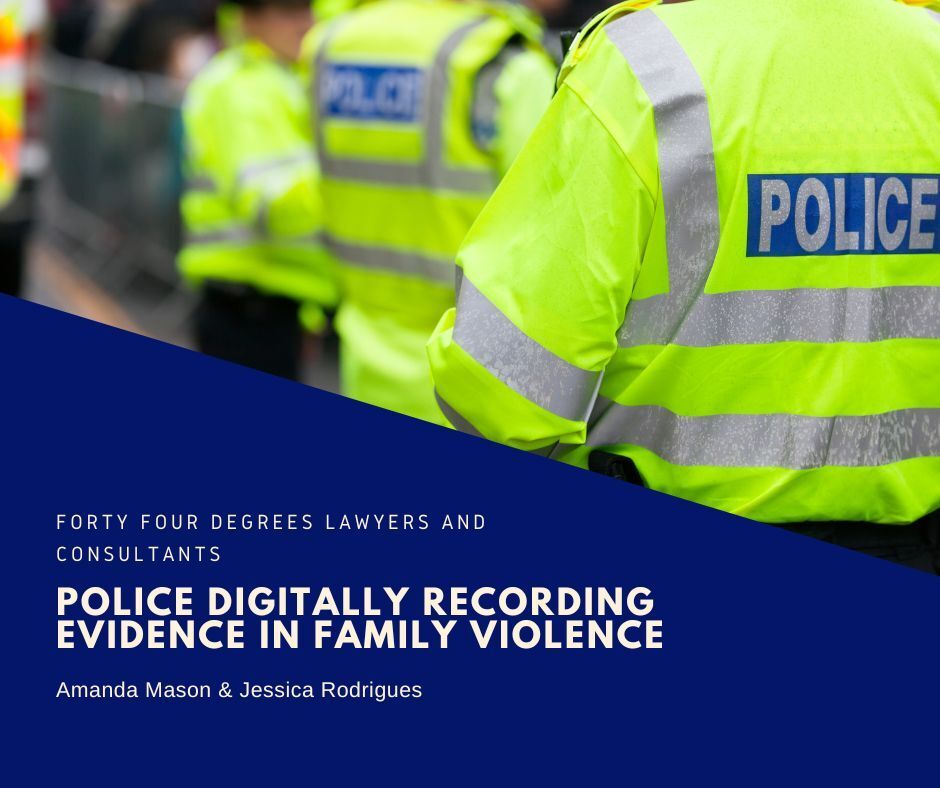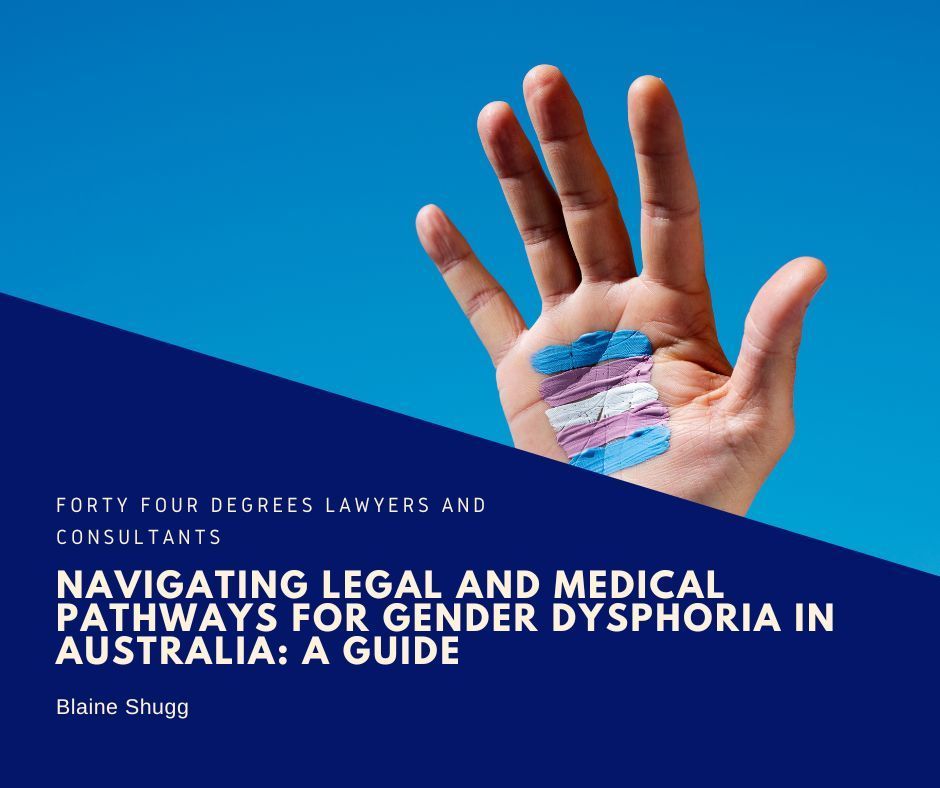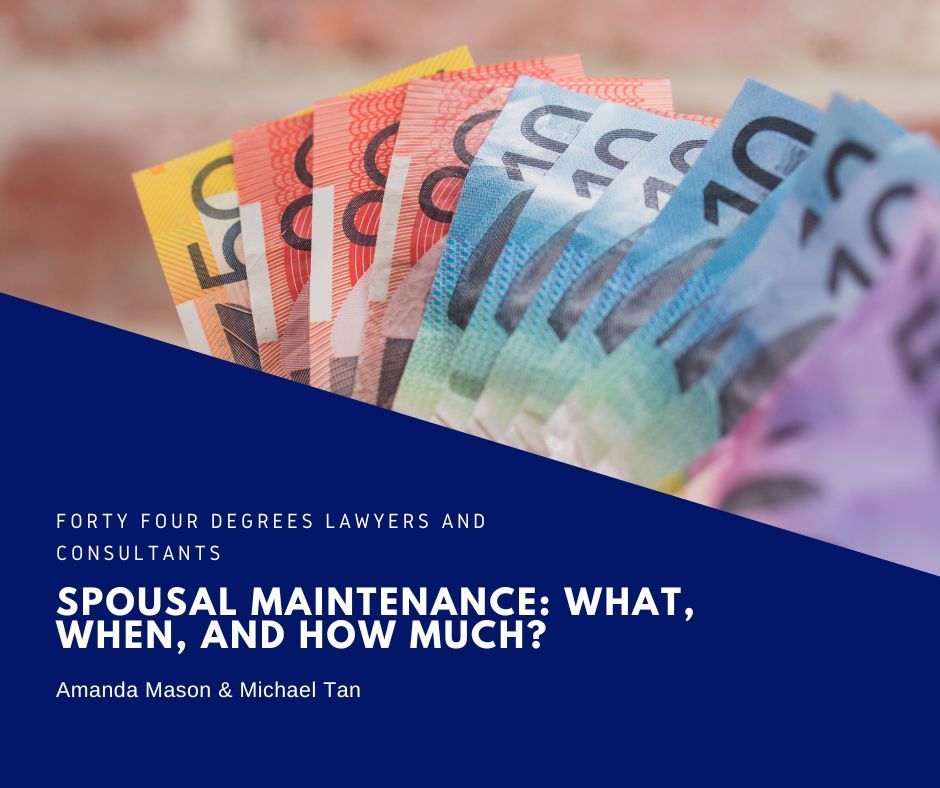Recording evidence digitally in Family Violence cases
Victoria Police are trialing a new method of recording evidence in family violence proceedings, including using body cams

Digitally recorded evidence in chief or ‘DREC’ for short, is a victim statement that is recorded by police using police-issued body worn camera. The body worn camera is a portable camera that captures audio and video recordings. The DREC may replace all, or part of, a victim’s formal written statement.
DREC can be used in proceedings relating to family violence, and can be played in court as the victim’s evidence-in-chief. In 2018, the use of DREC was trialled in Court at Epping and Ballarat and is now available for use within all Victorian Courts.
Since its inception there has been significant use of DREC by Victoria Police when dealing with victims of family violence. Section 368 of the Criminal Procedure Act 2009 (Vic) permits the digital recording of evidence-in-chief from family violence victims and the use of pre-recorded evidence-in-chief in family violence proceedings.
Victoria Police aims for DREC recordings to be of a duration of 15 minutes or less. Though, the length of a DREC will vary from case to case. Police members who wish to use DREC must also complete specific training.
What does this look like for the victim?
In order for police to use DREC in a matter, the victim must be 18 or over, not appear to have a cognitive impairment and must provide informed consent. Once police obtain the victim’s consent, they interview the victim while recording their statement.
Even with the use of DREC, the victim will still need to attend court. If DREC is used as evidence-in-chief, the victim will be required to attest to the truthfulness of its contents in court and be available to be cross-examined and possibly re-examined.
If the victim does not attend court, the DREC may still be used as a prior statement according to the normal rules of evidence in the Evidence Act 2008 (Vic). The DREC is also subject to the normal rules of evidentiary disclosure, and it may have to be disclosed to the accused and/or their legal representative.
If the victim does not want the DREC to be used in court proceedings, they may make an application in writing to request that the DREC not be used in either:
- the course of an investigation of a family violence incident, or
- in a subsequent prosecution.
If such an application is made by the victim, police will be required to assess the safety risks the victim may face if the DREC is not used in evidence. The DREC may still be used if police conclude that the victim is at a greater risk of harm if it is not used, and as a result, a prosecution does not occur.
Can DREC be used in civil proceedings?
As well as being used as evidence in criminal proceedings, the DREC can also be used in civil proceedings, such as a part of a family violence intervention order (FVIO).
The DREC will be used for the most recent incident and the victim may be required to provide further details to police of any historical family violence that has occurred previously. This further information will be taken as a written statement.
What does this look like for the legal practitioner?
Legal practitioners usually receive a victim’s written statement as part of a brief of evidence.
Even if DREC is used the process remains the same for:
- providing briefs of evidence; and
- FVIO applications.
DREC may be used for:
- summary matters;
- indictable matters; and
- in a FVIO proceeding.
Challenges of DREC
A concern is that while DREC can give the victim a voice, it may not necessarily reduce the trauma associated with having to repeatedly describe incidences of family violence.
There is also a perception among police that the formality and length of the preamble that they are required to give to the victim to get their consent is excessive. Therefore, consent may become an issue that can be challenged in the future due to police trying to short cut this process.
A United Kingdom study explored how the emotionality of a victim’s demeanour affects perceived credibility. It was found that the mode used to give complainant evidence is important as male assault complainants were perceived as significantly more credible when they gave evidence live than via a video recording.
Additionally, it is noted that the process of taking the DREC is not sufficiently inclusive of those from non-English speaking backgrounds.
Other disadvantages include the possibility of poor or inappropriate interview practices, rambling by the victim with the likelihood that they include unnecessary and irrelevant details or inadmissible evidence.
It has been recommended that that the courts upgrade their current technology to better support the showing of DRECS in court and that a translation of the preamble be adopted to better support those who are non-English speakers.
Strengths of DREC
It is suggested that the use of audio-visual recordings may reduce the retraction of statements or withdrawal of support by victims in prosecutions.
Body worn cameras may increase accountability and prompt a proactive approach to domestic violence incidents as officers are more likely to arrest perpetrators in order to avoid potential criticism from colleagues or other justice professionals viewing the footage.
Recording the DREC in the exact location or in local proximity to the incident allows police to get powerful evidence of the harm experienced by the victim. Thereby assisting in the prosecution of family violence matters.
Another strength of DREC is that the use of audio-visual evidence may limit the opportunity for perpetrators and other viewers of the DREC to question or deny the reality and impact of such violence on victims. It also allows victims to tell their story in their own words and as discussed earlier, other advantages of video recordings include increased accuracy, detail, completeness, and certainty about the evidence.
Other jurisdictions and the future of DREC
DREC is also operating in other jurisdictions. A video recorded evidence in chief pilot started in September this year at two Magistrates’ Courts in Queensland for domestic and family violence related criminal proceedings.
The NSW justice system also adopted the use of domestic violence evidence in chief in 2015 in relation to domestic violence matters.
If you need assistance in guiding you through the complexities of family violence matters, please contact Amanda Mason on [email protected]
Contact Us
We’re an Australian Law Firm promoting a nuanced, personal touch. We have the skills you need to resolve your case quickly and with a positive outcome. Our straight talking team stays close to simplify what is most often a complicated process. We help individuals and businesses with technology and startup law, property law including conveyancing and leasing, commercial law, civil litigation, wills, estates, bankruptcy, insolvency, criminal law, and professionals facing investigations and charges from their regulatory body.
We have a connected network of talented lawyers in Melbourne CBD, Dandenong, Ballarat, and Ivanhoe East.
Fill out the form or call us on 1300 892 237.
We will get back to you as soon as possible
Oops, there was an error sending your message.
Please try again later or call us on 1300 892 237.










